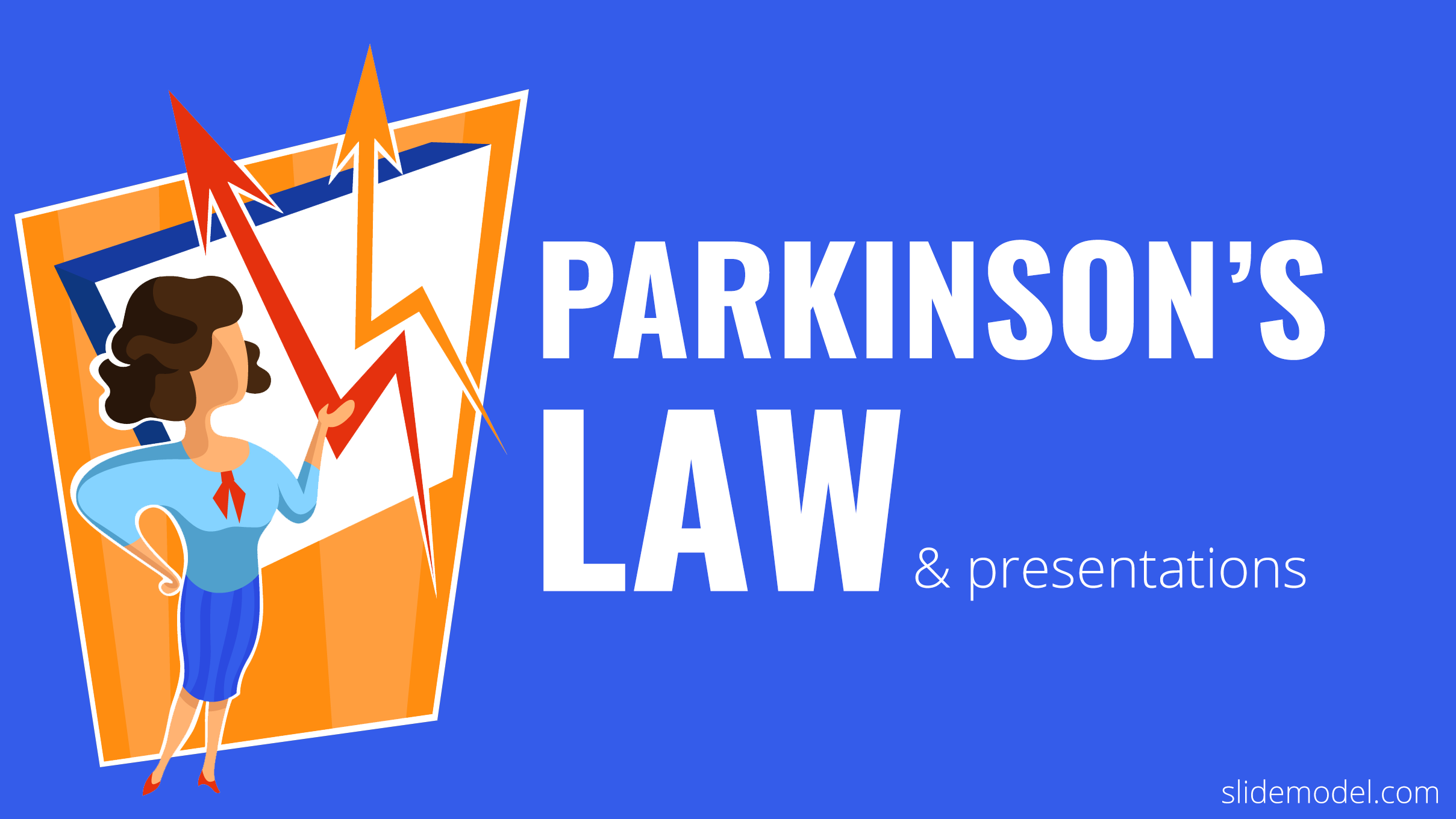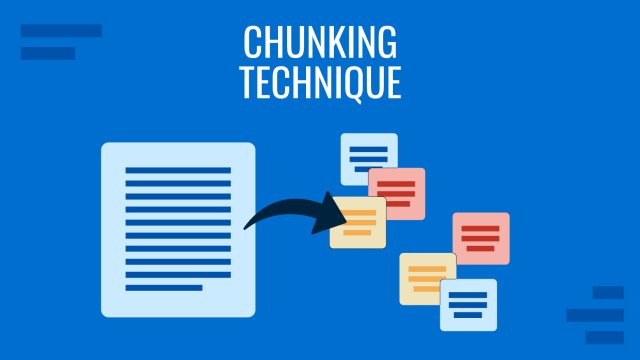
Table of Content
- What is Parkinson’s Law?
- History Of Parkinson’s Law
- How It Works
- Prepare your presentation using Parkinson’s Law in your favor
- Actionable Ways to Beat Parkinson’s Law in Your Next Presentation
- Real-Life Examples of Parkinson’s Law in Action
- Real-Life Examples of Parkinson’s Law in Different Scenarios
- Final Thoughts
What is Parkinson’s Law?
Parkinson’s Law was derived from an article written by Cyril Northcote Parkinson in 1955 for The Economist. The same article was later used by John Murray in the book Parkinson’s Law: The Pursuit of Progress.
Parkinson’s Law implies that the amount of time allocated for work is the time it will take for its eventual completion. For example, many individuals prepare for the exams the night before the day of the exam; instead of working earlier than they should. This also means that they waste a lot of time prior to the exam, which could have been used to improve preparation and perhaps score better grades. However, a problem with doing so is added stress, which leads a lot of people to procrastinate on work. This can be circumvented by making Parkinson’s Law work in your favour. In what is to follow, we will tell you exactly how to do this, but to get you started with the concept, here is a brief video.

History Of Parkinson’s Law
Parkinson’s Law, a concept frequently cited in discussions about time management and productivity, finds its roots in an article penned by Cyril Northcote Parkinson in 1955 for The Economist. This insightful observation on human behavior was later explored further by John Murray in his book, “Parkinson’s Law: The Pursuit of Progress.”
How It Works
At its core, Parkinson’s Law suggests that the time allocated for a task’s completion directly impacts the time it takes to finish it. This phenomenon often results in procrastination and inefficiency. For example, many individuals prepare for exams the night before, rather than allocating sufficient time earlier. This leads to both suboptimal outcomes and increased stress levels.
Prepare your presentation using Parkinson’s Law in your favor
You can use Parkinson’s law while preparing your next presentation by allocating less time than the actual time available. This professional speaker hack can help you become more productive, reduce stress and help you become a better presenter.
1. Get Your Tasks Done Early by Tricking Your Mind
Let’s say your task is due on Friday. You can avoid working at the very last moment by completing your task by, say, Tuesday. In such a case, you can work till Tuesday as if Wednesday is the deadline. This can help you trick your mind to be more productive. Not only can this help you complete your work on time, but this can also have other positive implications.
2. Give Yourself Time to Reflect
If your task has been completed earlier than usual, you can get some time to reflect; in the case mentioned above, two full days. You can be relaxed enough to feel comfortable that your work is complete and, at the same time, make further adjustments as needed.
3. Make Further Adjustments
Even the more seasoned presenters can have a presentation deck with a spelling mistake, faulty animations, or hardware issues at the presentation venue. Completing your work beforehand can help you account for all these issues, and make further adjustments to your slides and other key aspects that might hamper your presentation. Test your animations, the file version of the presentation, which might conflict with the hardware available at the venue, and other fine details which you can have time to check in advance.
4. Be Ready for the Moment of Truth
When you complete your tasks at the last moment, it can leave you drained and hazy. Taking advantage of Parkinson’s law to complete work beforehand can give you the intellectual freedom and peace of mind to be ready for the moment of truth. This can also help you be better prepared for your Q&A session and to take on those tough questions. Using this method, you should be ready enough at the Q&A to say, ‘ask me anything’!
Actionable Ways to Beat Parkinson’s Law in Your Next Presentation

Here are a few actionable recommendations to help you incorporate Parkinson’s Law in your presentations. The below-mentioned tips are meant to give you practical steps to follow for applying Parkinson’s law for the best results as a presenter.
1. Break Down your Tasks and Deadline
Playing blind is no strategy for a presenter. You need to know what your tasks are and break them down in the form of a deadline. To do this, you can begin by exploring your topic, making an outline for your slides, and even labeling each slide in your presentation with a title to set a sequence for your presentation (even if you don’t have content for each slide yet).
Once the outline is ready, you can begin adding content to one slide after the other. Make sure you have a deadline in mind to complete the task well before the actual deadline.
Takeaway – Timely Completion of Work: This will result in the timely completion of your task, ensuring you meet your deadline and don’t have to feel embarrassed in case you miss out on your task due to an eventuality.
2. Done is Better than Perfect
Remember, tomorrow is never certain! No matter how certain you might feel about getting things done at the last moment, something might ruin all your plans. It’s better to have your task done beforehand than to wait till the last moment, which might end up being never! Even if your work isn’t perfect, it’s still better to have something done than to end up with nothing in the wake of an eventuality.
Takeaway – Improvement in Quality of Work: Getting your presentation done early will also give you an opportunity to improve the quality of work, as it will give you time to reflect, check mistakes, and account for other variables which might make your presentation troublesome. Not to mention checking the presentation venue to make sure it has PowerPoint installed, or those speakers you might need for a video to play or simply making sure they have a projector or an active online connection to play a video. The latter has happened to many presenters in the past, i.e., they gave an impromptu presentation because the venue had no projector or no one told the staff to arrange one. Making sure this doesn’t happen to you needs time, and using Parkinson’s Law provides you with that extra bit that can make or break your presentation.
3. Take a Moment to Reflect
Reflecting upon your presentation is not just about fixing slides, spelling mistakes, or preparing your speech. Many times, what we deem as clearly understandable is immensely confusing for the audience. You might be using technical words that need simplification or a line in your slides might beg more questions than providing answers. Such a flaw in your presentation can leave the audience dissatisfied.
Takeaway – Clarity in What You Intend to Preach: Before you can convince a hall full of people to believe in what you preach, you need clarity first. Many presenters can end up making the mistake of not going deep enough to explore their subtopics, ending up with a presentation where they themselves don’t have an in-depth understanding of the various aspects of their presentation. Some topics can be too complex to dwell too much into, so stick to what you’re best at and aim for that clarity by using the extra time you get because of Parkinson’s Law.
4. Present Like a Pro and be on Top of Your Game
The aforementioned can help you be on top of your game and present like a pro. Once you have accounted for all the variables you can think of the result will sort itself out. If you can account for at 90% of what you have presented, the rest of the 10% (if flawed) can still be covered up in case you end up missing out on something. This is a lot better than standing before an audience with a blank face during a Q&A session, reading from slides, or ending up with system issues when trying to run your PowerPoint.
Takeaway – Reduced Stress Levels: Once you have completed your work beforehand and accounted for all possible variables you can think of you can have reduced stress levels. A good presenter is not just one who has good public speaking skills but one who has a calm mind!

Using Parkinson’s Law in presentations and even your daily life tasks can help you become more productive, stress-free and give you the one thing many people lack in their work; absolute clarity. It is amazing what having more time can teach you. Reflecting upon your work, accounting for mistakes and variables, as well as making those tiny readjustments can make all the difference for a presenter.
So, use Parkinson’s Law, set a short deadline, and experience peace of mind to present like a pro and be on top of your game.
Real-Life Examples of Parkinson’s Law in Action
Parkinson’s Law is not confined to presentations; its impact is pervasive across various spheres of life and work. Consider an individual’s morning routine—the time taken to get ready often expands to fill the available time. In business, projects with flexible deadlines tend to stretch out longer than those with strict time limits. This phenomenon even extends to emails, where tasks tend to take longer if allotted more time.
Anecdotal evidence also illustrates the positive outcomes of applying Parkinson’s Law. Take the case of a software development team. By imposing tighter deadlines, they discovered heightened focus, leading to more efficient code development. Similarly, a student preparing for an exam is allocated a fixed study time each day, resulting in improved retention compared to last-minute cramming.
In the corporate world, companies that employ Parkinson’s Law principles when setting targets can achieve higher productivity. Employees often rise to the challenge and accomplish more in less time by intentionally reducing time frames for completing tasks.
Real-Life Examples of Parkinson’s Law in Different Scenarios
Let’s delve into various scenarios where Parkinson’s Law manifests its influence:
- Project Management: An advertising agency noticed that when project timelines were extended, the quality of work didn’t significantly improve. They experimented by assigning shorter timelines, and teams adapted by focusing on the essential tasks, resulting in better output.
- Home Cleaning: People preparing for guests often find they can clean their homes more thoroughly in a shorter period. The impending arrival sets a tight deadline, forcing them to be efficient.
- Fitness Goals: Someone aiming to exercise for an hour a day might achieve the same results in just 30 minutes if they prioritize intensity and stay focused.
- Writing: Writers often experience an increase in productivity as a deadline approaches, leading to the phenomenon of “word sprints,” where they write a substantial amount in a short time.
- Meetings: When meetings are scheduled for shorter durations, participants tend to focus more on the key points, resulting in more productive discussions.
Final Thoughts
Embracing Parkinson’s Law represents a paradigm shift in time management. This principle encourages individuals to recognize that tasks will expand to fill the time allotted. By strategically harnessing this concept, presenters and professionals can achieve exceptional results.
Beyond presentations, Parkinson’s Law teaches us to question how we allocate our time. By challenging conventional approaches and intentionally setting shorter deadlines, we can become more productive, focused, and accomplished in our endeavors. It’s about using time as a tool to foster efficiency, quality, and creativity rather than allowing it to slip away into the abyss of procrastination.
In a world where time is both a finite resource and a key to success, understanding and applying Parkinson’s Law can be a game-changer. By wielding this principle, you can turn the tables on procrastination and inefficiency, delivering better presentations and enhancing the overall quality of your work and life.
So, use Parkinson’s Law, set a short deadline, and experience peace of mind to present like a pro and be on top of your game.


